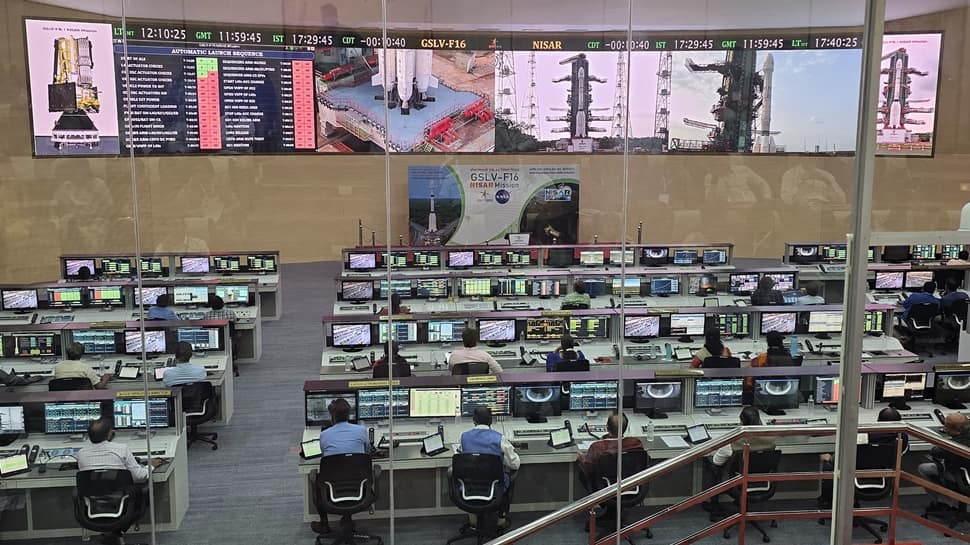When Rakesh Sharma looked down at Earth from space in 1984 and said “Saare Jahan Se Achha,” he wasn’t just describing what he saw—he was capturing what India could become. Today, as we celebrate ISRO’s incredible journey from a small fishing village in Kerala to landing on the Moon’s south pole, it’s clear that our space agency hasn’t just reached for the stars; it has brought them closer to every Indian home.
Humble Beginning That Changed Everything
In 1962, when scientist Vikram Sarabhai chose Thumba, a tiny fishing village near Thiruvananthapuram, to build India’s first rocket station, many wondered why. The answer was simple but brilliant—Thumba sat near the geomagnetic equator, the perfect spot for launching rockets. From that modest beginning, ISRO has grown into one of the world’s most respected space agencies, completing 100 successful launches and earning global recognition for doing more with less.
Add Zee News as a Preferred Source
What makes ISRO’s story truly special isn’t just the rockets or satellites—it’s how space technology quietly entered our daily lives and made them better.
Space Technology in Your Pocket
Think about your last phone call, the weather forecast you checked this morning, or the GPS that helped you navigate through traffic. Behind all these everyday conveniences are ISRO’s satellites working 36,000 kilometers above your head. The INSAT communication satellites ensure your phone calls reach across the country, while NavIC—India’s own GPS system—helps delivery boys find your home and helps farmers know exactly where to plant their crops.
When cyclones approach the coast, it’s ISRO’s weather satellites that give us early warnings, potentially saving thousands of lives. During the devastating 2004 tsunami, the lack of timely warning cost many lives. Today, ISRO’s satellites watch over our coasts 24/7, ensuring such tragedies can be prevented.
Making the Impossible Look Easy
ISRO’s greatest strength lies in its unique approach—achieving world-class results at a fraction of the cost others spend. The Mars Orbiter Mission (Mangalyaan) reached Mars for just ?450 crores—less than the budget of many Bollywood movies. While other countries spent billions, India proved that smart engineering and careful planning could achieve the same results for much less.
This cost-effectiveness isn’t just about saving money; it’s about making space accessible. When ISRO launches satellites for other countries at affordable rates, it’s not just earning foreign exchange—it’s proving that space technology doesn’t have to be only for the super-rich nations.
From Failure to Triumph
ISRO’s journey hasn’t been smooth sailing. The agency faced failures with early GSLV rockets, the heartbreak of Chandrayaan-2’s lander crash, and the recent EOS-09 mission setback. But each failure taught valuable lessons. The successful Chandrayaan-3 landing—making India the fourth country to land on the Moon and the first near the south pole—showed how ISRO learns from its mistakes and comes back stronger.
The Human Touch
Behind ISRO’s success are ordinary Indians doing extraordinary things. From Ritu Karidhal, who helped guide Mangalyaan to Mars, to M. Vanitha, who led Chandrayaan-2, ISRO has shown that talent knows no boundaries. The recent SpaDeX mission, where two Indian satellites performed a complex dance in space to dock with each other, was achieved by a team of engineers who grew up in regular Indian families, studied in Indian colleges, and dreamed of touching the sky.
What Lies Ahead
The next few years will be even more exciting. Gaganyaan will send three Indians to space in 2027—imagine the pride when we see our own astronauts floating 400 kilometers above Earth, looking down at the land that nurtured their dreams. By 2035, India plans to have its own space station, and by 2040, an Indian will walk on the Moon.
But ISRO’s real achievement isn’t just in the missions it completes—it’s in the dreams it plants in young minds across the country. When a child in a remote village looks up at the night sky and imagines building rockets, when a girl from a small town decides to become a space scientist, that’s when ISRO’s mission truly succeeds.
The Bigger Picture
Today, as ISRO prepares for its biggest challenge yet—sending humans to space—it carries with it the hopes and dreams of 1.4 billion Indians. From a fishing village in Kerala to the south pole of the Moon, ISRO has shown that with determination, innovation, and smart thinking, India can achieve anything it sets its mind to.
The stars are no longer the limit; they’re just the beginning.
(Girish Linganna is an award-winning science communicator and a Defence, Aerospace & Geopolitical Analyst. He is the Managing Director of ADD Engineering Components India Pvt. Ltd., a subsidiary of ADD Engineering GmbH, Germany.)


